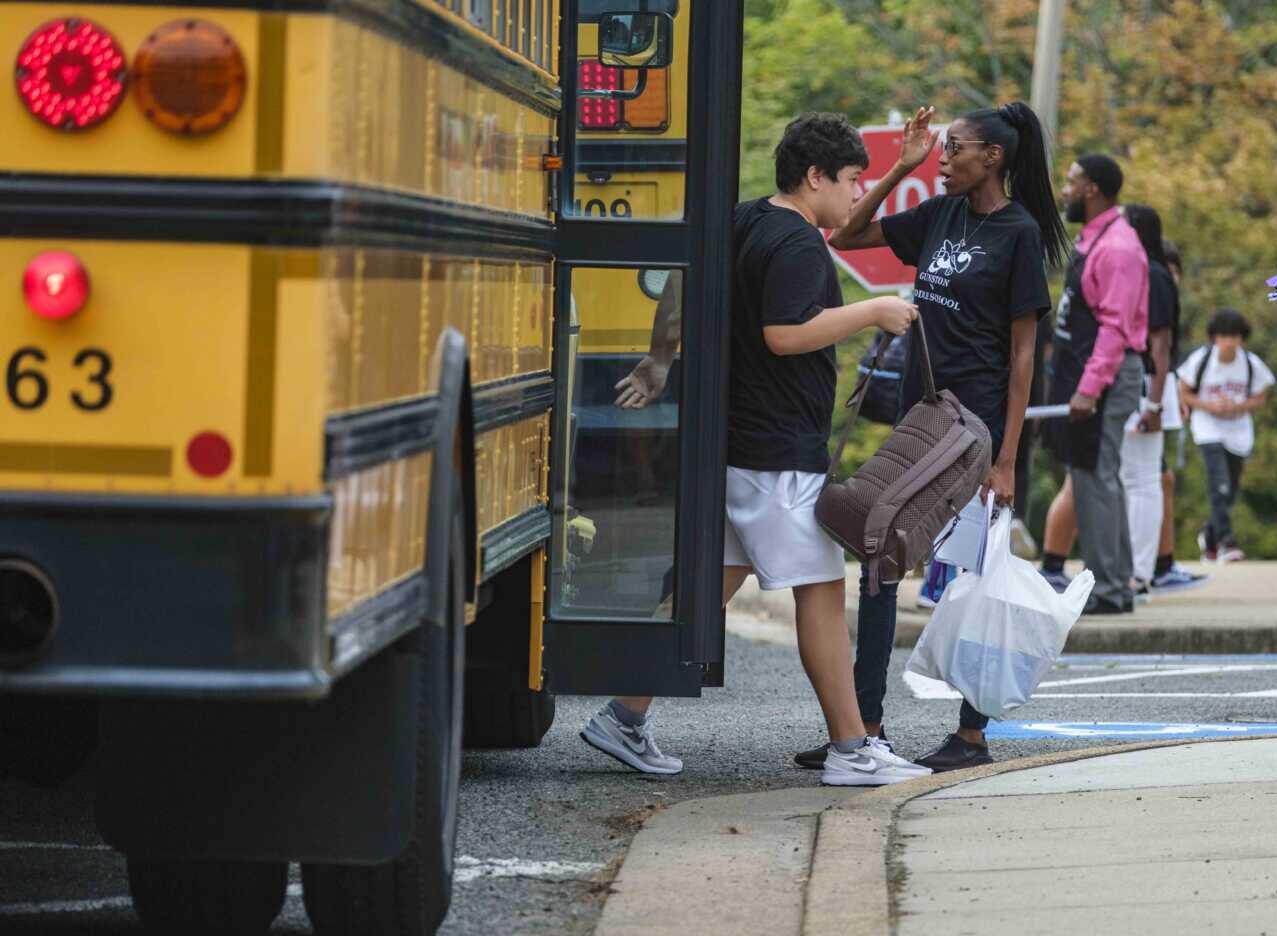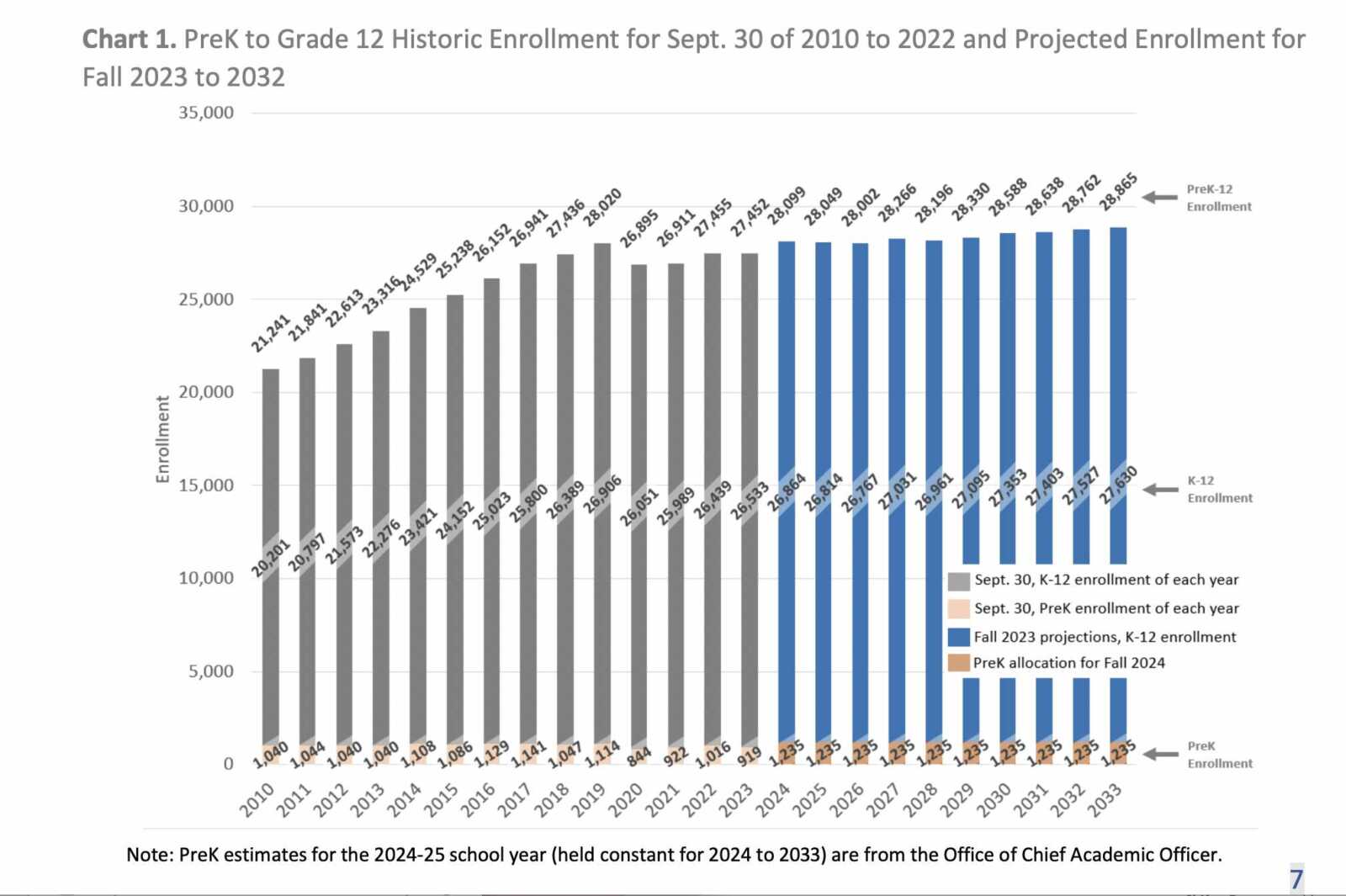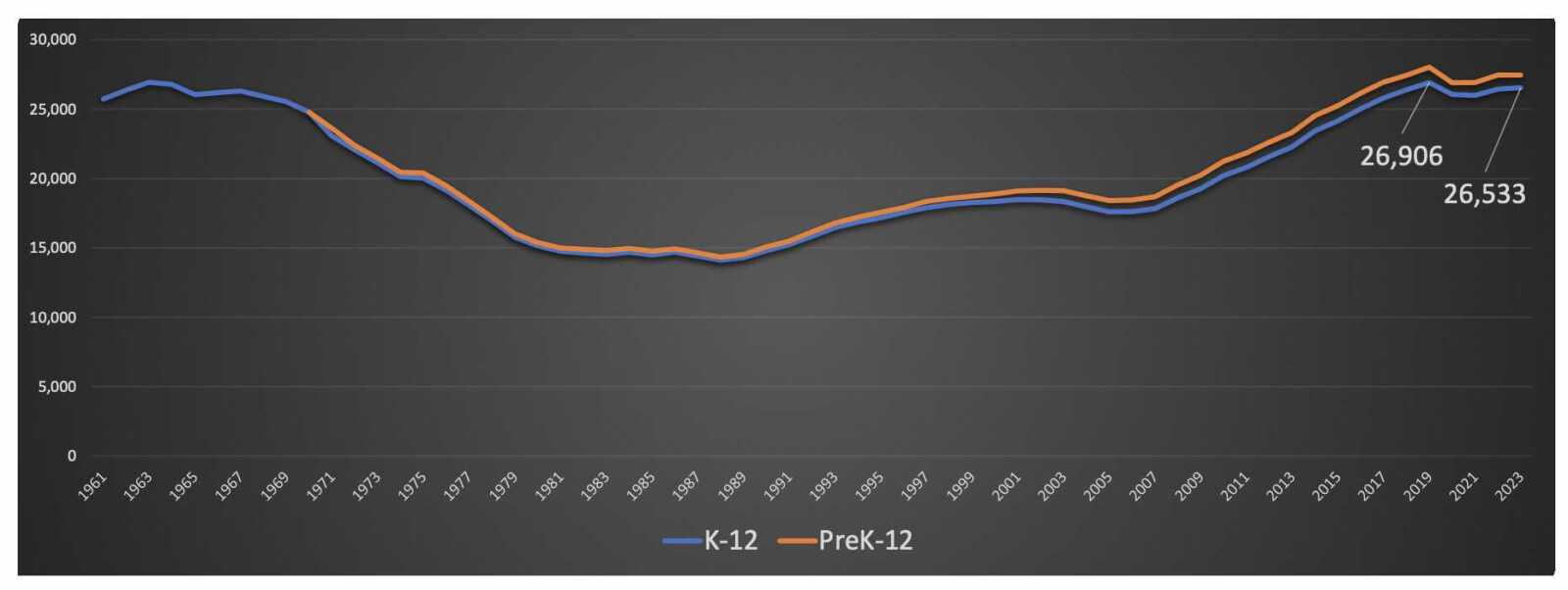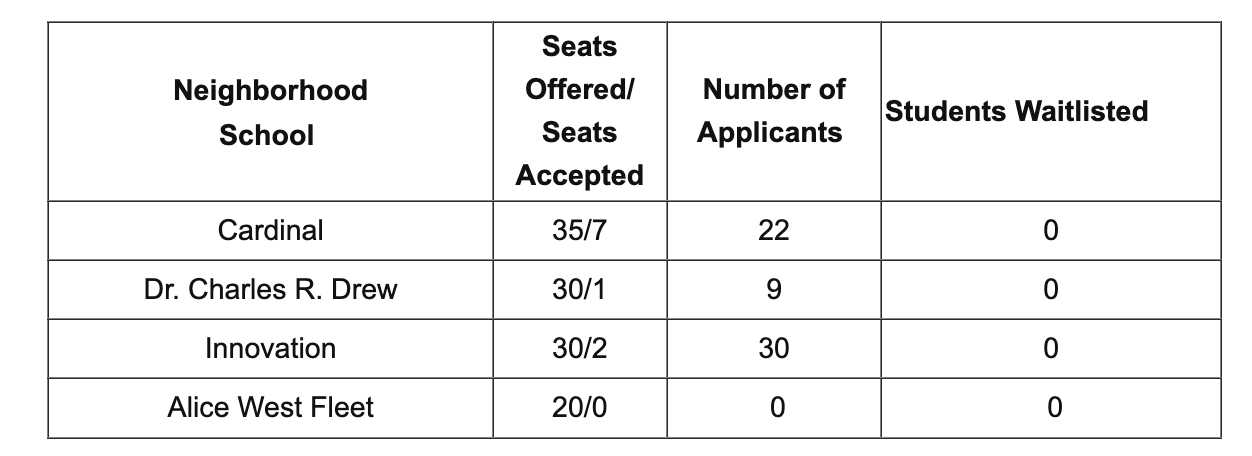
A mini-baby boom could deliver Arlington Public Schools a slight enrollment bump through 2033, according to the latest 10-year projections.
The report says live births are predicted to increase by 13%, or about 300 babies, through 2028. This modest increase contrasts with a report last year predicting short-term increases followed by declines in the outer years due to declining births.
Now, APS projects incremental growth through 2033 that nudges enrollment just past peak levels last seen in 2019.
“Last year, the births forecast declined over time, whereas the latest birth forecast increases in its outer years,” the enrollment report says. “These changes in birth forecast over time are important since they are used to project incoming kindergarten students five years later.”

The projection is conservative but still has some risk, as not all babies will become students, APS planner Robert Ruiz said in a Joint Facilities Advisory Committee meeting this week. In addition, actual enrollment numbers in recent years have been difficult to interpret.
“Importantly, enrollment trends are not yet telling a consistent narrative,” Ruiz said. “Enrollment trends have been mixed with declines, growth and then, flattening.”
Enrollment has cooled since a baby boom between 2006-12 drove “unprecedented” growth and precipitated a hiring spree, new elementary and middle schools and expanded schools and even a discussion of a fourth comprehensive high school. Now, APS predicts maintaining peak enrollment levels, attained in 2019 and last seen in the 1960s, for the next decade.
Given short- and long-term fiscal constraints and excess capacity at several buildings, the school system likely will not turn to new construction for enrollment management. The status quo, however, is not working, according to some School Board candidates and School Board watchdog Arlington Parents for Education, who call attention to large class sizes at some buildings from third grade through high school.
“APS’ enrollment is leveling off,” Arlington Parents for Education said in a statement to ARLnow. “However, lower enrollment does not lead to lower class sizes. We must focus on planning factors if we want to manage class sizes within this new normal of flattening enrollment, budget constraints, and students who are still struggling with learning loss and widening achievement gaps, as confirmed by the midyear data out of APS this week.”

Class sizes
At the high school level, enrollment has surpassed 2019 levels, which may be the result of children born in the 2006-12 “baby boom” matriculating into high school.
At this level, School Board candidate Larry Fishtahler, who recently wrapped up a substitute physics gig at Wakefield High School, says class sizes can be unwieldy.
“I had 30 and 31 students in that class, with seating capacity of 28,” he said. “It is really hard to explain how hard that is. Even with a lot of hard work, you can not give each and every student the one-to-one attention that they need. This makes teachers’ stress and workload greater, but more importantly it has a significant negative impact on students’ engagement.”
“There are excessive and intolerable rates of overcrowded classrooms in our middle and high schools… especially at Wakefield and W-L,” parent Camille Galdes told the School Board in a letter shared with ARLnow.
There are also signs of overcrowding at some elementary schools.
The most recent class size report indicates Arlington Science Focus and Glebe elementary schools have kindergarten and first-grade classes with 25 students in them compared to class sizes of 18-22 at other schools.
Third grade classrooms at Claremont exceed recommendations, with 27 students, compared to other schools where third grade hovers around 21-24 students. These schools, per APS capacity charts, are either nearly full or above 100% capacity.
For School Board candidate Chen Ling, APS has to show parents how projections like this inform decisions like when to hire a new teacher, or add or remove a class or trailer — the kinds of practical questions parents have if enrollment rises or falls at their child’s school.
“The demographers obviously worked very hard on this, but it’s not enough to have data,” he said. “You need to have a plan to use that data effectively.”
ARLnow did not hear back from the other two candidates before deadline.
Short-term management
APS uses 10-year projections like last month’s to fill out its capacity projections, which determine annual enrollment management plans.
Short-term strategies vary from trailers to transfers. Last year, APS relied in part on transfers to alleviate overcrowding at some of its elementary schools.
These have previously registered a lukewarm response. Although there were several applicants, ultimately, this resulted in a shift of only 10 students to other neighborhood schools, per data APS provided to ARLnow.

APS took an additional enrollment management step last spring, unenrolling students found to be living outside the county. Through the process, APS withdrew 165 fifth and eighth grade students and 123 siblings, says APS spokesman Frank Bellavia. Twelve fifth and eighth grade students and 76 siblings were reinstated once their paperwork was complete.
Overall, Bellavia noted, this resulted in 200 students unenrolled and saved APS nearly $5 million, given the per-pupil education cost of $24,560.
Longer-term management
The projections also undergird plans for managing long-term trends.
Last year’s enrollment projections, for instance, informed the report that recommended adjusting middle school boundaries, turning Nottingham Elementary School into a swing space and repurposing the old Career Center for the Montessori Public School of Arlington.
All three recommendations were fraught, however. APS paused the middle school boundary process, citing stable enrollment. It found Nottingham would not be a suitable swing space for the schools in most need of one for extensive renovations. The plans for Montessori were challenged by some who say other options should have been considered, too.
Given the modest enrollment growth and excess seats at several schools, APS maintains it does not need to build anything new to meet these increases, according to its 2023 long-range plan to renovate existing school facilities.
“Recent new construction projects have provided additional student capacity to catch up to growing population demands, so there is a reduced need for new construction to increase seats and an increased need to address deferred renovation, maintenance, and modernization needs on existing buildings,” it says.
Instead, where necessary, it will focus on schools with deficient educational space, though the County Council of PTAs has previously called into question whether APS can afford to do just that.
“Recent spending decisions and currently proposed spending projects have monopolized our bond issuance capacity until at least FY 2032, leaving insufficient funding for a major renovation,” it said.

